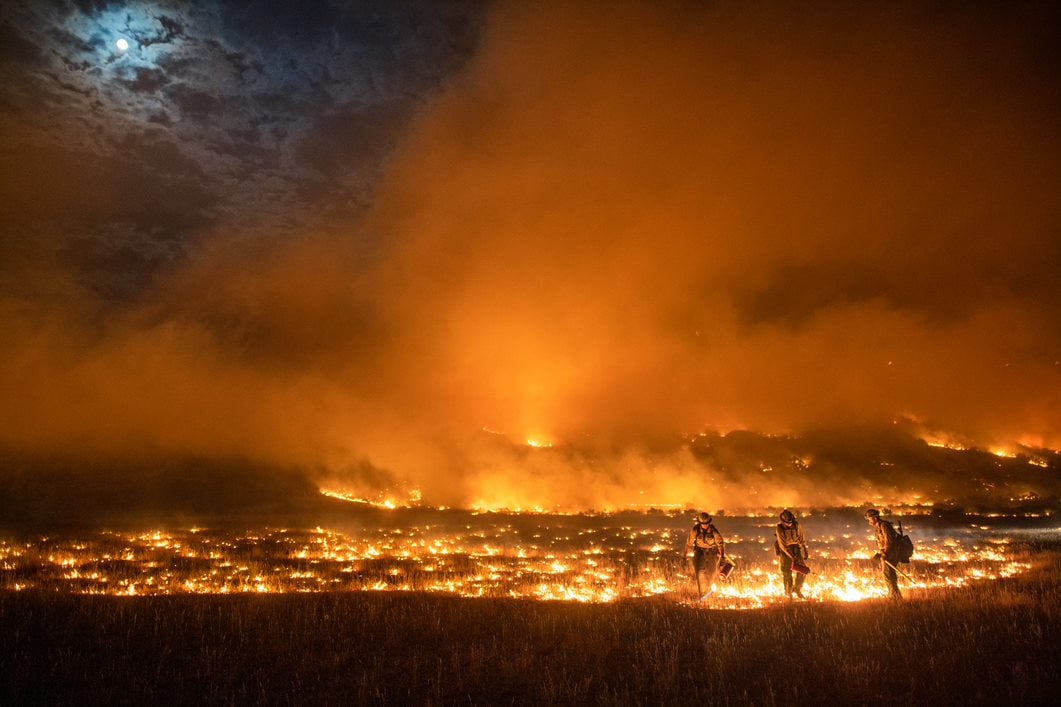
Update Aug. 14, 2020: The Pine Gulch Fire is now the fourth-largest wildfire in state history. Our original story continues below.
Infrared flights over the massive blaze north of Grand Junction calculated that the Pine Gulch Fire had consumed more than 100 square miles by the evening of Aug. 13.
The 68,323-acre fire is burning mostly in rough, unpopulated terrain, although a handful of ranches and other homes in the area have been evacuated.
Nearly 750 people are fighting the fire, which remains at 7 percent containment. It's currently the state's second-highest fire priority; not far to the east, the Grizzly Creek fire is just a tenth of the size but is burning close to homes and businesses in Glenwood Springs.
According to the Rocky Mountain Area Coordination Center, the Pine Gulch Fire's growth Wednesday pushed it into the top five largest in state history. Three of those fires have occurred in the past decade.
Lightning started the Pine Gulch Fire on July 31 and the weather has given fire crews little help since. For the third straight day, they face red flag conditions — temperatures in the 90s, winds gusting close to 30 miles an hour, and humidity in the single digits. According to a fire weather meteorologist assigned to Pine Gulch, the region's next chance for moisture won't arrive until early next week, and it's unclear whether it will develop into anything significant enough to impact the fire.
Smoke from the fire has blanketed communities across the state, hazing out views from Grand Junction to Denver.
The Colorado Department of Public Health And Environment has issued an air quality health advisory for wildfire smoke in counties near the fire. And the Front Range, from Douglas County to the Wyoming line, is under an Action Day Alert for multiple pollutants, including smoke. That means air quality could become unhealthy for sensitive groups.








